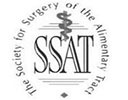Diaphragm Hernias
The diaphragm is a muscle that separates the chest cavity from the abdominal cavity, and helps in breathing. Sometimes, a congenital birth defect in children may cause an opening in the diaphragm. The abdominal organs may move into the chest region and interfere with the complete growth of the lungs, which can lead to difficulty in breathing. This condition is called diaphragmatic hernia. Diaphragmatic hernia can be repaired with the help of surgery.
Diaphragmatic hernia repair is performed under general anesthesia. Your surgeon makes a small incision in the upper abdomen and inserts a tube called a trocar through which the laparoscope is introduced into the abdomen. A harmless gas is injected into the abdominal cavity near the belly button to expand the viewing area of the abdomen, providing a clear view to your surgeon and sufficient room to work. Additional small incisions may be made to insert other surgical instruments.
During the procedure, your surgeon first repairs the diaphragmatic hernia, by bringing any hernia contents down into your abdominal cavity, then sutures the diaphragm muscles together. Sometimes, a type of mesh may be inserted to support and strengthen the diaphragm. The laparoscope and other instruments are removed and the gas released. The tiny incisions are closed and covered with small bandages. Like all surgeries, diaphragmatic hernia repair may include certain complications such as respiratory failure, lung problems, collapsed lungs and breathing problems.


















